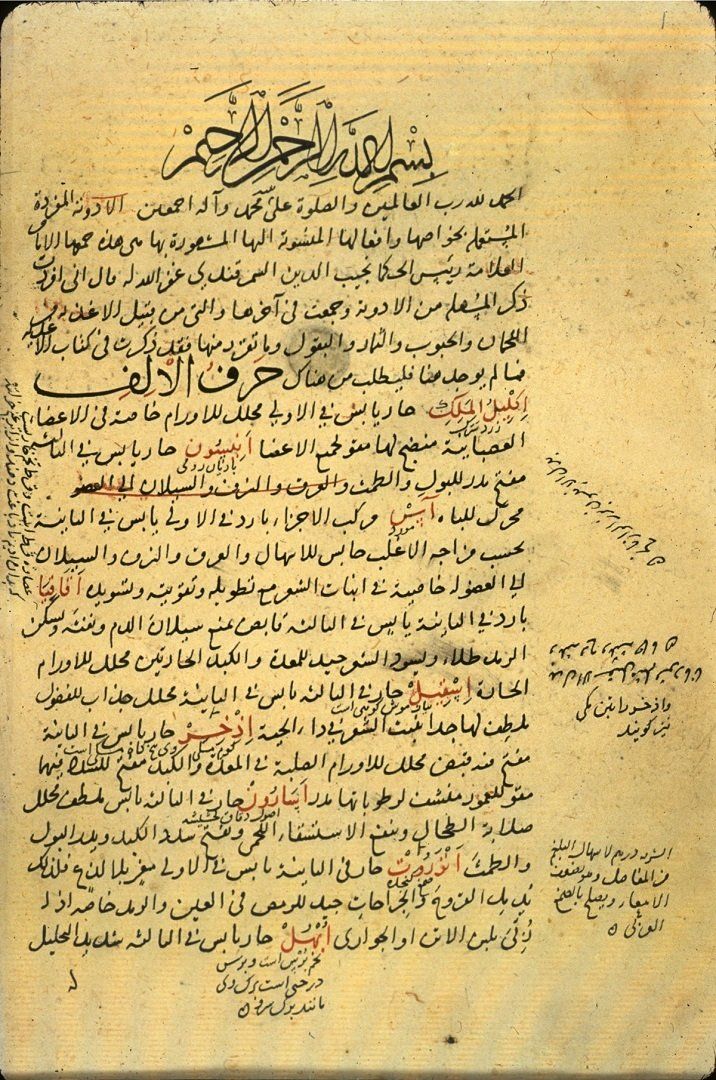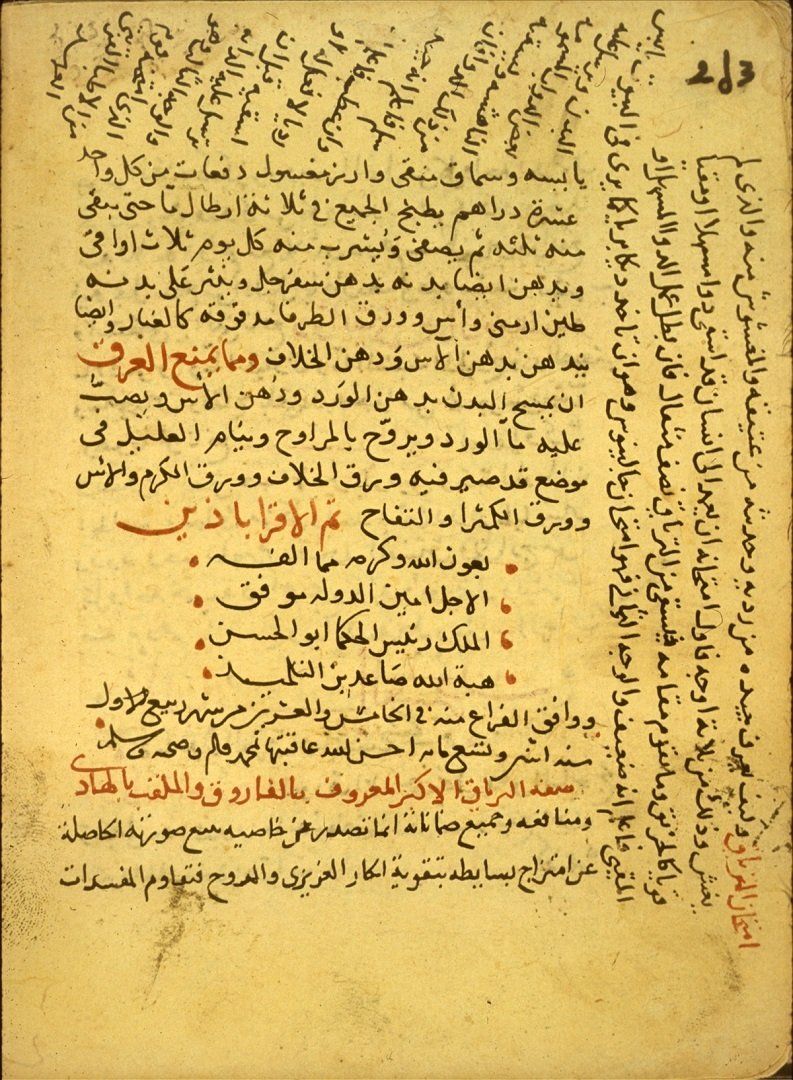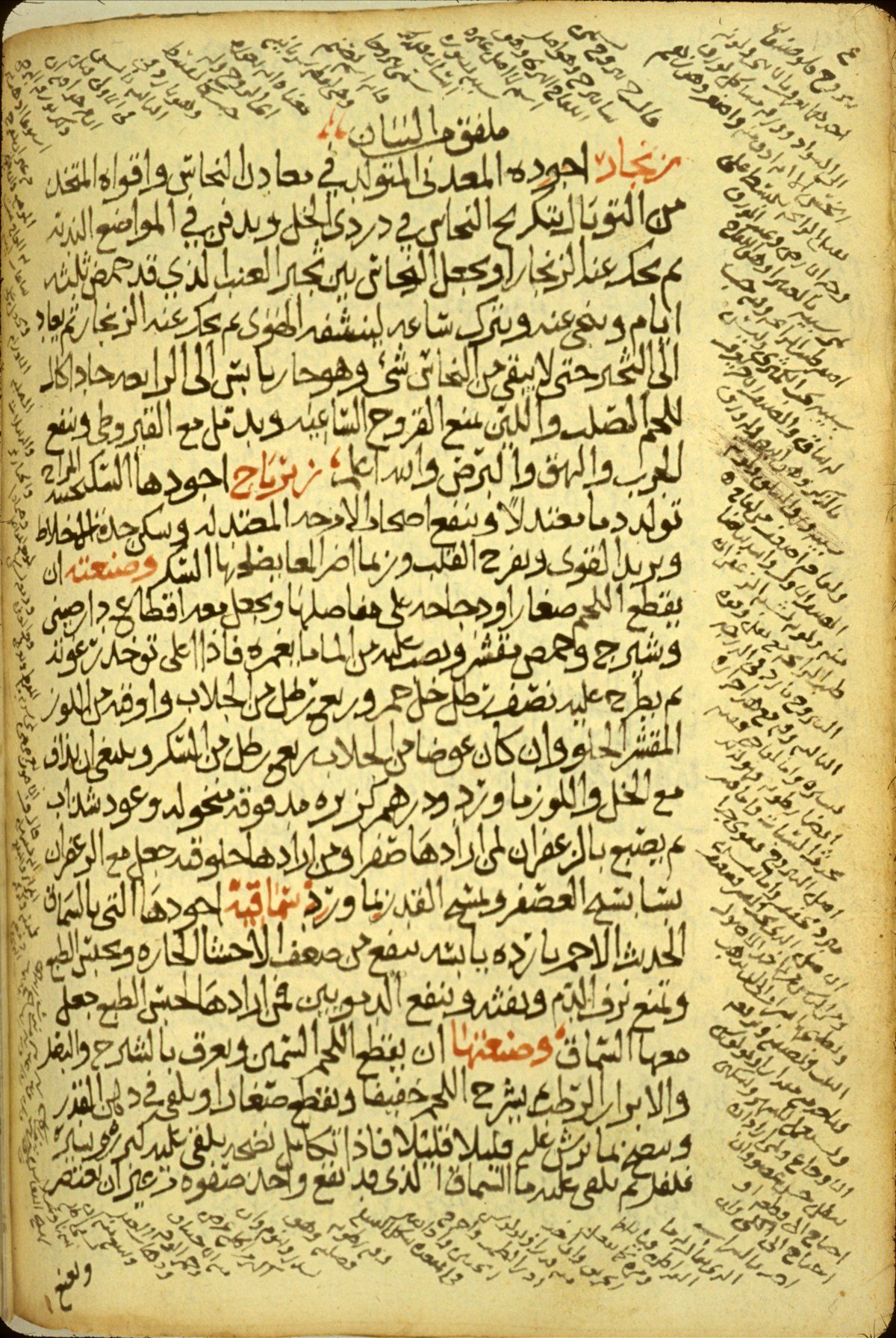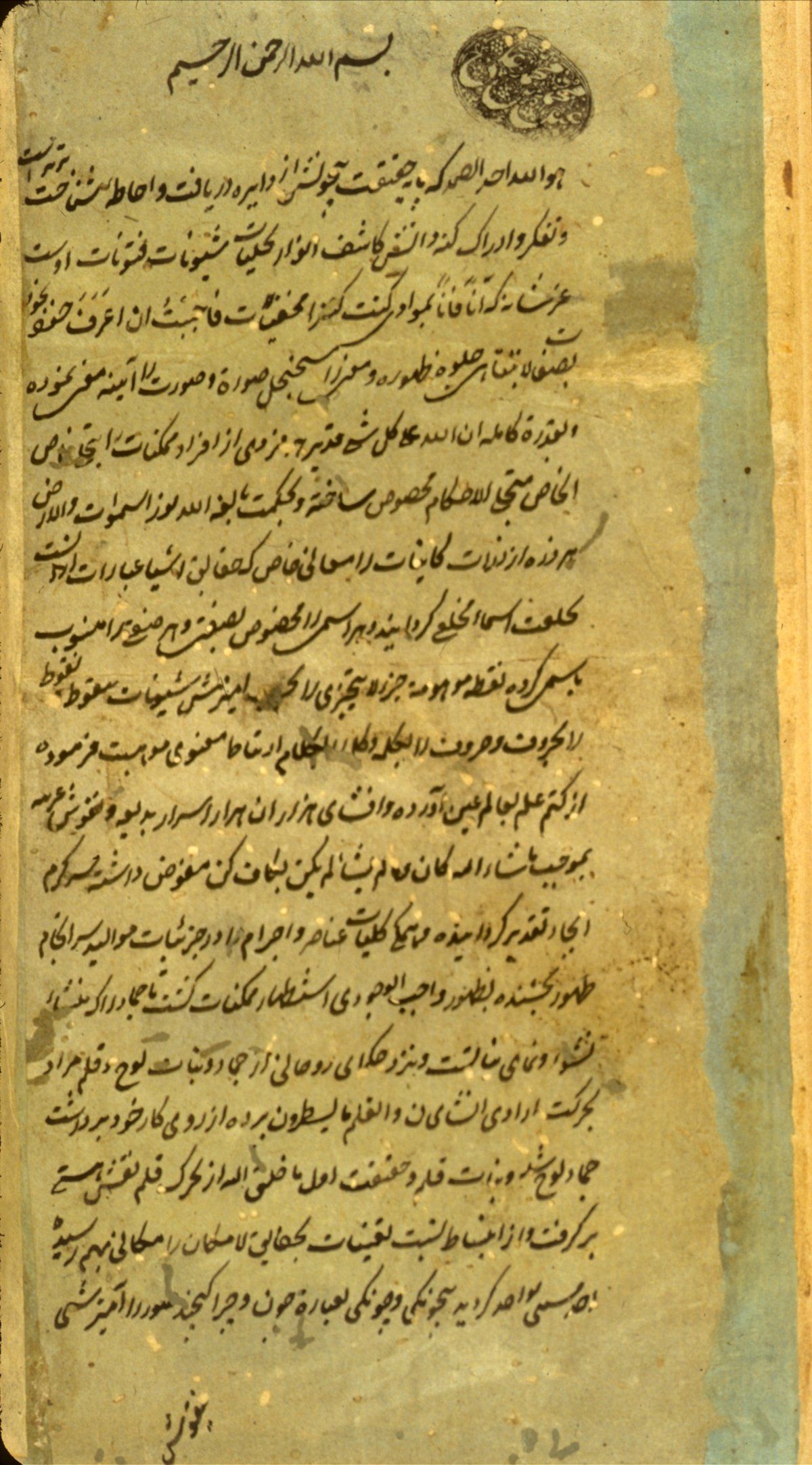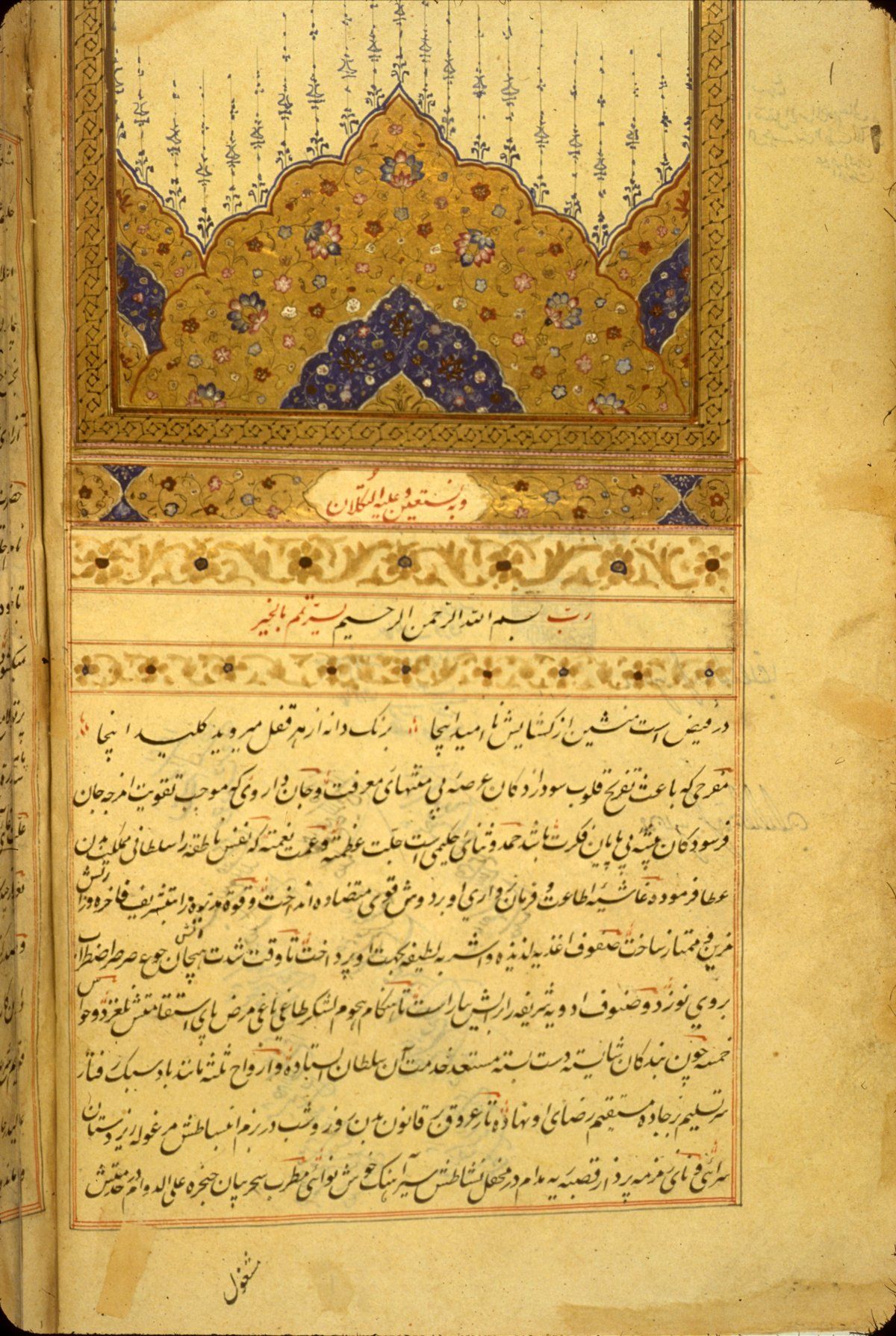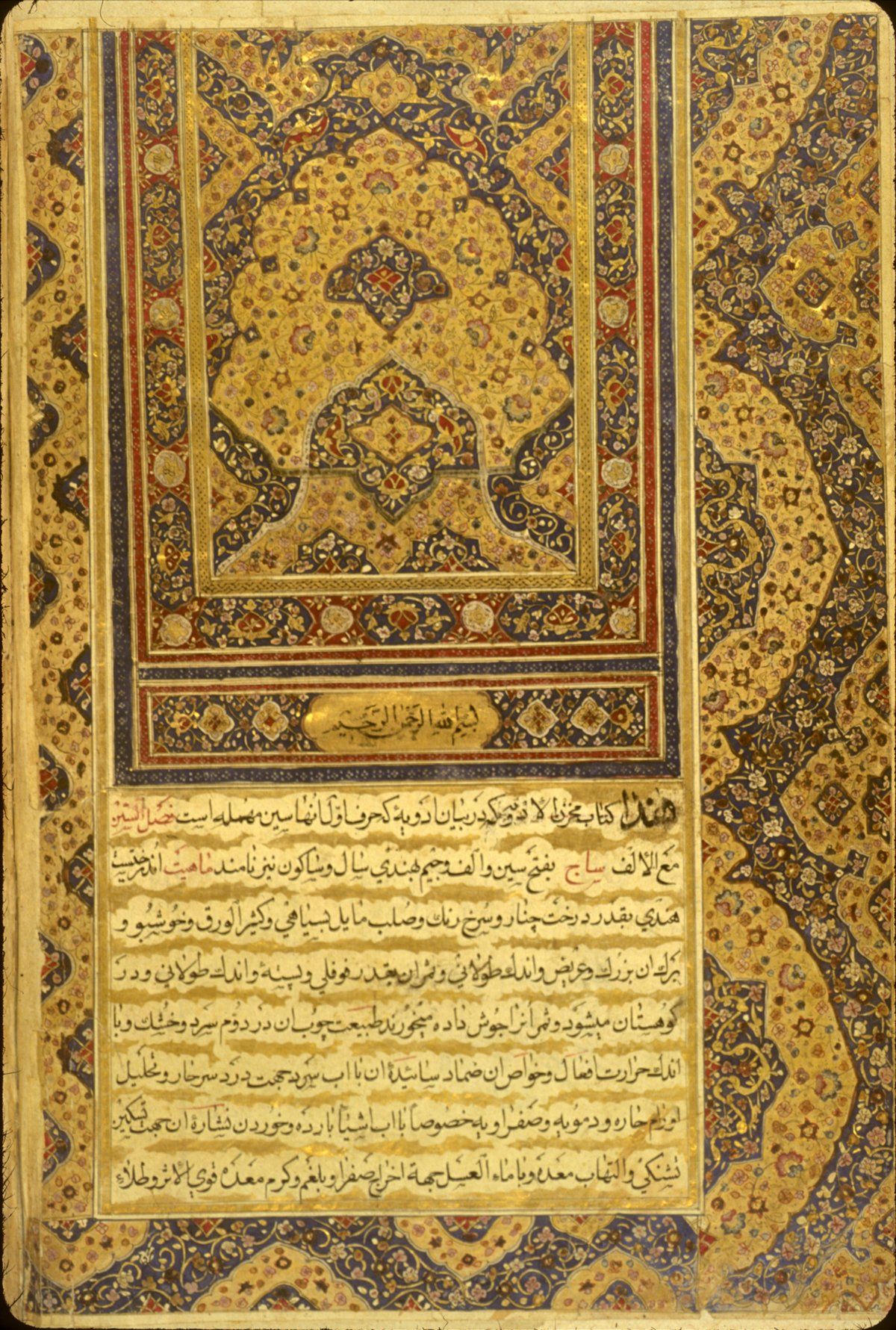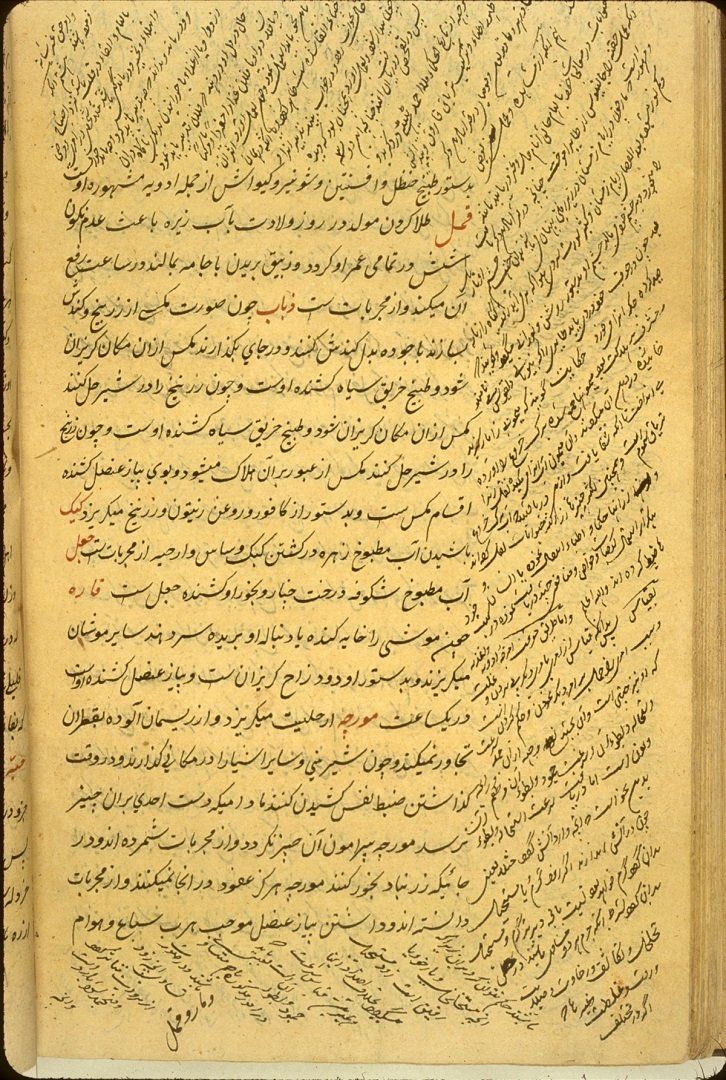al-Adwiyah al-mufradah al-musta‘malah bi-khawaṣṣhā wa-af‘ālhā al-mashhūrah bi-hā bi-hā
The opening page of al-Adwiyah al-mufradah al-musta‘malah bi-khawaṣṣhā wa-af‘ālhā al-mashhūrah bi-hā bi-hā (Useful Simple Remedies with Their Properties and Utilities for Which They are Renowned) by Najīb al-Dīn al-Samarqandī (d. 1222/619). The copy was made during the last ten days of Ramadan 740 (= March 1340) by the copyist Muḥammad ibn ‘Abd Allāh, known as al-Shams al-Tasatturī the physician (al-mutaṭabbib). There are Persian marginal and interlinear annotations.
Aqrabadhin
The colophon of a copy of the formulary (Aqrabadhin) by Ibn al-Tilmīdh (d. 1165/560). It is stated in lines 15-16 that the copy was completed on 25 Rabi‘ I 902 (= 1 December 1496). The copyist is not named. The bottom three lines constitute the beginning of an anonymous essay on the production of theriac (tiryaq). The marginalia apply to the latter treatise rather than to the formulary by Ibn al-Tilmīdh.
Mulaffaq min al-Bayān
The opening folio of an anonymous compilation on material medica said to be taken from al-Bayān, presumably a reference to the popular pharmaceutical compendium Minhaj al-Bayān by Ibn Jazlah (d. 1100/493). The copy is highly annotated. It is undated and unsigned but appears to have been made in the 18th century.
Alfaz al-adwiyah
The opening of a Persian pharmacological dictionary composed in 1628/1038 by Nūr al-Dīn Muḥammad ‘Abd Allāh Shīrāzī. The treatise was dedicated to the Mughal Emperor Shah Jahan. The copy was made in 1719/1131. Near the top is an impression of an oval owner's stamp bearing the name ‘Abd [Allāh] Muḥammad ibn Muḥammad ‘Alī and dated 1268 (= 1851). The manuscript is made of paper dyed blue. The outer edge of the folio has been repaired with a very brighter blue paper.
‘Ilāj al-amrāḍ
The illuminated opening of a copy made during a one year period, Rabi‘ II 1215 to Rabi‘ II 1216 (August 1800 to September 1801) of the comprehensive treatise on compound remedies (‘Ilāj al-amrāḍ) by Ḥakīm Muḥammad Sharīf Khān, who died in either 1805/1220 or 1816/1231.
Makhzan al-adviyah
The right-hand side of an illuminated double-opening that begins one fascicle of a presentation copy of a pharmacopoeia apparently taken from the Jāmi‘ al-javāmi‘-i Muḥammad-Shāhī by Hakīm ‘Alavī Khān (d. 1747/1160 or 1749/1162), which was dedicated to and named for the Mughal emperor Muḥammad-Shāh.
Makhzan al-adviyah
The left-hand side of an illuminated double-opening that begins one fascicle of a presentation copy of a pharmacopoeia apparently taken from the Jāmi‘ al-javāmi‘-i Muḥammad-Shāhī by Hakim ‘Alavī Khān (d. 1747/1160 or 1749/1162), which was dedicated to and named for the Mughal emperor Muḥammad-Shāh.
Tuḥfat al-mu’minīn
A sample folio, concerned with the treatment of poisonous bites, from a copy of the Tuḥfat al-mu’minīn, a popular Persian pharmacopoeia by Tunakābunī which he dedicated to Shah Sulayman, the Safavid ruler of Persia from 1666 to 1694. This incomplete and undated copy was possibly made in the early 19th century in India.

